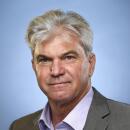A Welcome Wagon for Paradise
- Share via
The single most useful piece of advice I ever received about living in California came from Steve Emmons, a reporter in this newspaper’s Orange County office. This was almost 20 years ago. I had moved to Costa Mesa from San Francisco, and by way of friendly welcome Emmons passed along something his father had told him many years before.
No matter what it takes, he said, never drive on the Santa Ana Freeway.
Who can challenge the wisdom in that?
The best definition of California I ever encountered was but a few words long, a creation of the late Wallace Stegner. I’ve quoted it in previous columns, and a reader has been prodding me to elaborate on the phrase’s origins. In truth, I haven’t been able to pin down where Stegner first offered up the line, but I do know he was proud of it. I happened to interview him in San Francisco after what would be his last public reading. I asked him about California, and he quoted himself back to me.
As I have said before, he said again, California is “America, only more so.”
Since I had the ear of one of the great chroniclers of this state and the West, I took the opportunity to ask Stegner what advice he might give a journalist attempting to make sense of modern California.
Same as always, the old man said.
“Follow the water.”
*
The idea for this particular column is not mine. Rather, it was appropriated, fair and square, from Doyle McManus, The Times’ Washington Bureau chief. Doyle sent me a sort of California short course he’s begun to develop, a list of classic books, movies and songs that together would help initiate new hires in the nuances of a place Carey McWilliams called “The Great Exception.”
It’s a fine list, with the most likely choices already represented--the writings, for example, of Joan Didion and Kevin Starr, the movie “Chinatown,” songs like “L.A. Woman.” The concept itself, however, intrigues me more than the particulars, the possibility of creating a primer for the half-million newcomers who each year surge into California.
Numerous helpful tidbits come to mind: At what point, for example, does it become socially permissible in an earthquake to start screaming like a loon. Why one must drive south in Los Angeles to reach the beach. Spanish-speaking gardeners, what to ask and what to leave unsaid. Why Sonny Bono is a serious candidate for U.S. Senate.
If I had to choose an introductory text, it would be “California for Travellers and Settlers,” by Charles Nordhoff. A New York journalist, he was hired in the early 1870s by the railroads to describe California in ways that would prompt Midwestern farmers to sell the plow, come West and settle. Critics discredit the work as mere boosterism, but the descriptions of a largely undeveloped California are wonderful. And the subtext of boosterism, oddly enough, adds to the charm, providing a reminder that, from the start, California always has been a bit of a happy con job.
*
And if I chaired the Welcome Committee--and owned Southwest Airlines--I’d arrange to fly every new Californian between Burbank and Sacramento and back. Of all the commercial routes, this one offers the most instructive window-gazing. It is possible to trace the Sierra waterworks from mountain streams, to lakes behind dams, to canals that turn natural, north-flowing rivers south, toward the cities. It is possible, at once, to follow the water--and also to appreciate how much open land remains, to be botched or not.
Random advice? There’s the Bob Hope instruction on real estate investment: Go to the end of the freeway and buy. Earthquakes? I once heard a Caltech expert suggest the best thing to do in a big one is simply “stay in bed,” advice easily taken. And let me add: For the sake of perspective, Californians should know where their people came from and under what conditions. The cruelties inflicted on newcomers today are but an echo of previous bouts of nativism.
Also, develop a thick skin. Everybody laughs at Californians; it’s payback for those sunny Rose Bowl blimp shots. Finally, get around. To live in California without living in all of California misses the point. In this last instruction, it helps to carry “California Place Names,” an instructive and often droll guide by the late Erwin G. Gudde.
A typical entry notes there have been some 50 places or features named Paradise in California, and goes on: Paradise [Butte] is one of several settlements so named which has survived. On the official Railway Map of 1900 it is recorded as Paradice. It could not be ascertained whether this spelling confirms the old story that the town was named of the “Pair ‘O Dice” saloon, or whether it was a misspelling which gave rise to the story. Helltown is a short distance away.
California in a nutshell.



